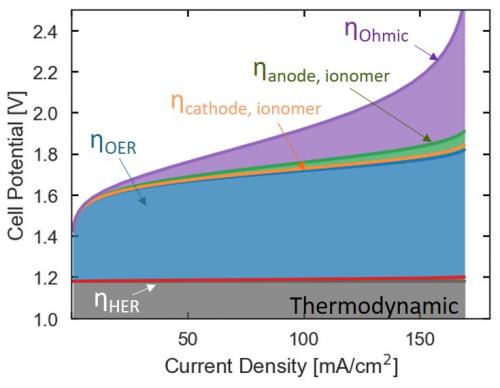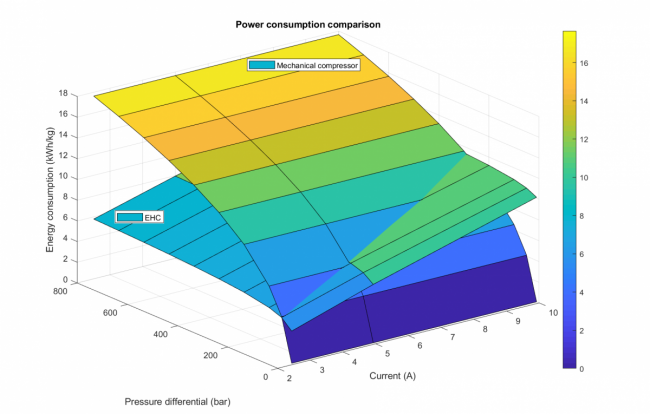Electrochemical Synthesis
Vapor-Phase Modeling of Electrochemical Oxidation Processes
 A vapor-phase electrolysis modeling system has been developed as a model system for other electrochemical oxidation processes. Through developing the model, water’s role as the reactant and hydrating agent for the ionomer and membrane phases can elucidate limitations in the system. The current model focuses on call water-vapor electrolysis, which has shown good agreement with experimental data. This model will be adapted to add additional species and reactions to help provide information of species transport for electrochemical oxidation processes.
A vapor-phase electrolysis modeling system has been developed as a model system for other electrochemical oxidation processes. Through developing the model, water’s role as the reactant and hydrating agent for the ionomer and membrane phases can elucidate limitations in the system. The current model focuses on call water-vapor electrolysis, which has shown good agreement with experimental data. This model will be adapted to add additional species and reactions to help provide information of species transport for electrochemical oxidation processes.
Figure at right: An applied voltage breakdown (AVB) is shown for a low humidity (30% RH) vapor electrolyzer. The model is able to differentiate the different overpotentials for kinetic, thermodynamic, and ohmic losses in the system. Ohmic losses in the membrane and kinetic losses at the anode for the oxygen evolution reaction are limiting the system, which helps guide future experimental work to develop which parameters we can control or which are inherent in the system.
Hydrogen Compressor Optimization

Hydrogen produced by electrolyzers is not compressed. To increase power density, the production of high-pressure hydrogen (up to 70MPa) is essential. To deliver pressurized hydrogen, electrochemical hydrogen compressors (EHC) are advantageous as compared to traditional mechanical compressor due to their ability to deliver high purity hydrogen, scalability, high efficiency, low maintenance costs and silent operation.
Mathematical models are valuable tools for evaluating EHC performance and providing guidance in system design to reduce the overall system cost and energy consumption. In this work, EHC system design for delivering pressurized hydrogen were studied using the numerical model. Because of the need to develop electrochemical hydrogen compressors in the fuel cell community in order to achieve the 2020 Department of Energy targets, we used the modeling results to provide guidance for material structure to the scientific community, helping to develop next-generation electrochemical hydrogen compressors. This EHC can be used to compress the hydrogen gas from 1 bar to 700 bar, which is currently the best in the US market.